The National Tree Seed Centre houses a collection that now represents 273 of Canada’s 720 tree and shrub species. Preserving this genetic diversity is an ongoing job.
A Nova Scotia mountain now has 110,000 more trees than it did in 2023. White spruce, red maple, and white birch seedlings dot the hillsides to replace trees lost to the deadly trifecta of storms, winds, and insect damage. As they grow, they’ll store carbon, beautify the park, reduce erosion, and provide habitat for hundreds of species of birds, mammals, and insects, including some at risk.
But these weren’t just any seedlings. Throughout the preceding year, a conservation team collected millions of seeds from these species. Beginning in the fall of 2022 and through 2023, the team has harvested seeds from twenty-one different species in the park and shipped them to the National Tree Seed Centre (NTSC) in neighboring New Brunswick. There, tree seed specialists cleaned, dried, cataloged, and stored them indefinitely — depending on the species, seeds are viable for decades — so the park can access them anytime in the future for growing and planting. The NTSC then sent some of these seeds to a private forestry company that grew those 110,000 seedlings for planting in the park.
I stopped by the center for a tour with Donnie McPhee — forestry officer, conservation geneticist, and NSTC coordinator. McPhee, 59, is just months away from retirement after 39 years of service, but you wouldn’t guess it. A tattoo of a bur oak seedling peeks from below the sleeve of his t-shirt. And his small office is scattered with hints at his favorite pastime — ultimate Frisbee. The center’s mission is no small feat: “Our mandate,” McPhee says, “is the conservation of Canada’s forest genetic diversity.”
Founded in 1967, the NTSC is Canada’s only federally funded tree seed facility. It houses the largest and most complete tree seed library in the country. Other seed facilities specialize either in agricultural seeds or in a narrow range of tree seeds for plantations. The NTSC is housed at the Hugh John Flemming Forestry Centre, a group of government departments, university facilities, and private offices. The center is tucked away on the sprawling grounds of a tree-studded lawn surrounded by big box stores and shopping malls high on a hill overlooking Fredericton, the New Brunswick capital. More than 500 people work in the complex, 120 of those in the federal wing. The NTSC went from three employees in 2016 to sixteen today. Most of that growth came after 2020 when the Government of Canada set a goal of planting two billion trees by 2030 and the NTSC launched its Indigenous seed collections program.
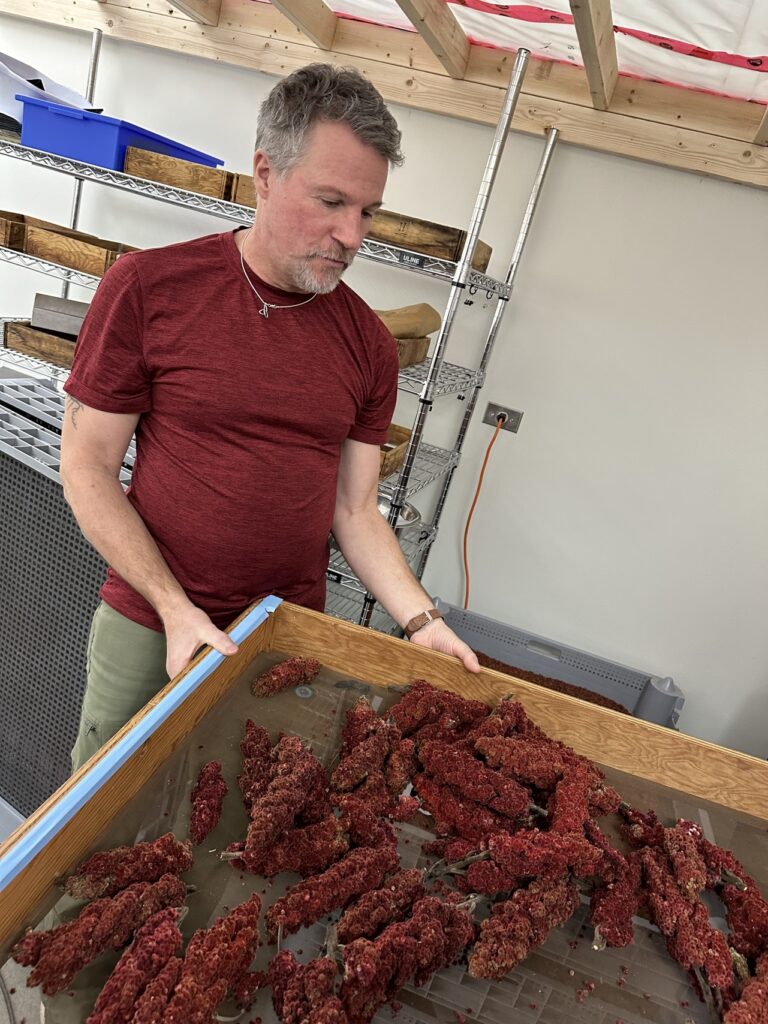
During his time here, McPhee has helped build a collection of seeds that now represents 273 of Canada’s 720 tree and shrub species. Given that many of those species vary genetically across the country’s 1,023 bio districts, a complete collection is years away. The job of preserving genetic diversity becomes even more complex when taking into account the unique needs and behaviors of each species. For example, black ash — a species important to Indigenous communities — produces seeds just once every nine years.
To help reach their goal, McPhee and his team are training national parks staff and Indigenous communities the science of collecting wild tree seeds. In 2022, McPhee himself logged 12,500 miles (20,000 kilometers) in an RV on a road trip across Canada, visiting twelve national parks and seventy Indigenous communities to deliver forty-four training sessions. He left behind over twenty gear packages used to collect seeds. As more and more seeds arrive from across Canada, that work is already paying off.
On our tour of the facility, McPhee introduces me to his staff. He greets each warmly and asks them to demonstrate their part in the complex work. Some are testing the viability of seeds stored here for thirty years or more. Some are growing seedlings in miniature greenhouses within larger greenhouses to determine which specimens can thrive under stresses brought on by climate change. Seedlings that show more resilience may become the forests of the future.
While most seeds are stored in vacuum sealed packages at -4°F (-20°C) in a series of walk-in freezers, some require special treatment. Matt Brophy, one of the group’s technicians, runs the cryogenic — or deep freeze — arm of the NTSC. Dressed in a white protective suit with a mask and long, heavy gloves, he prepares seeds with special needs for indefinite storage in tanks of liquid nitrogen at -321°F (-196°C). So far, the NTSC has worked out how to store twenty-seven species this way. Each tank holds 60,000 seeds. Nine tanks are squeezed into this small room. This is the only cryogenic facility in the country that preserves tree seeds for conservation.
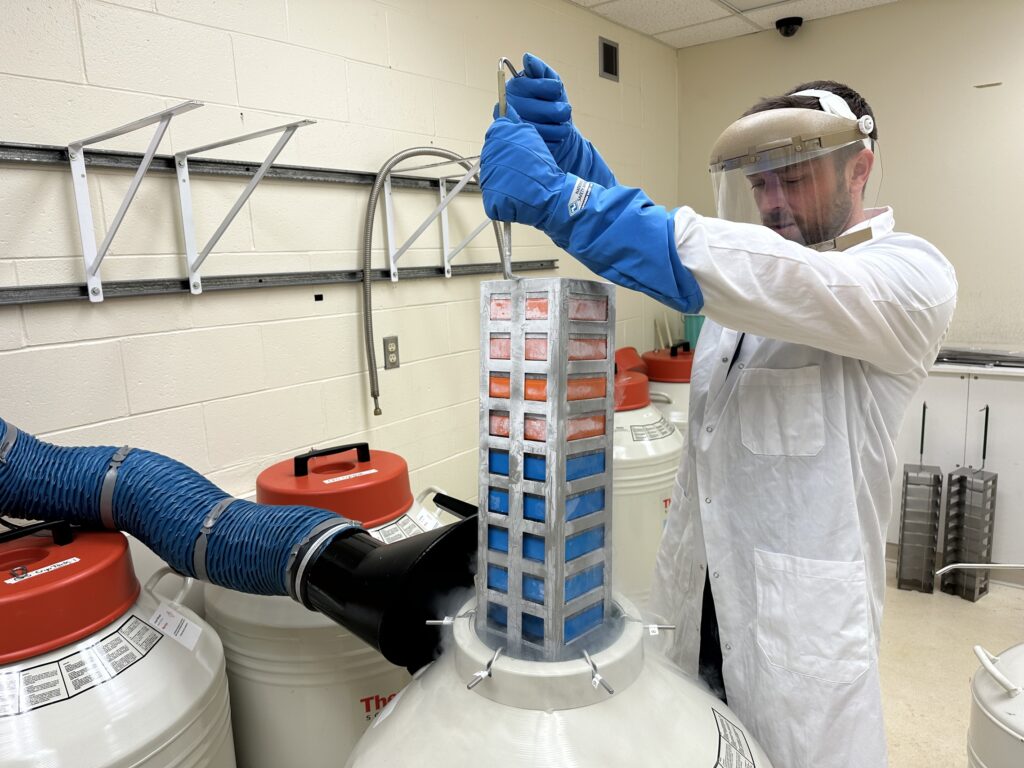
Naomi Millier, whose job is to offer technical support at the NTSC, works with Indigenous communities across the country to understand their needs when it comes to species with cultural, environmental, and economic value. Recently, members of Saulteau First Nation brought her seeds from the eight-petal mountain-avens, an arctic flowering dwarf shrub important to their culture and that of other northern Indigenous people. “It's always great when communities can bring their own seeds here,” says Millier. “They get to work on the equipment and find what works best for them.”
Since 2020, the NTSC has doubled its on-site footprint and later this year, it expects to grow that by another fifty percent. Despite the rapid increase in facility space, with the renewed interest in preserving and recultivating wild plant communities, the center can’t meet the increased demand from Indigenous groups and parks.
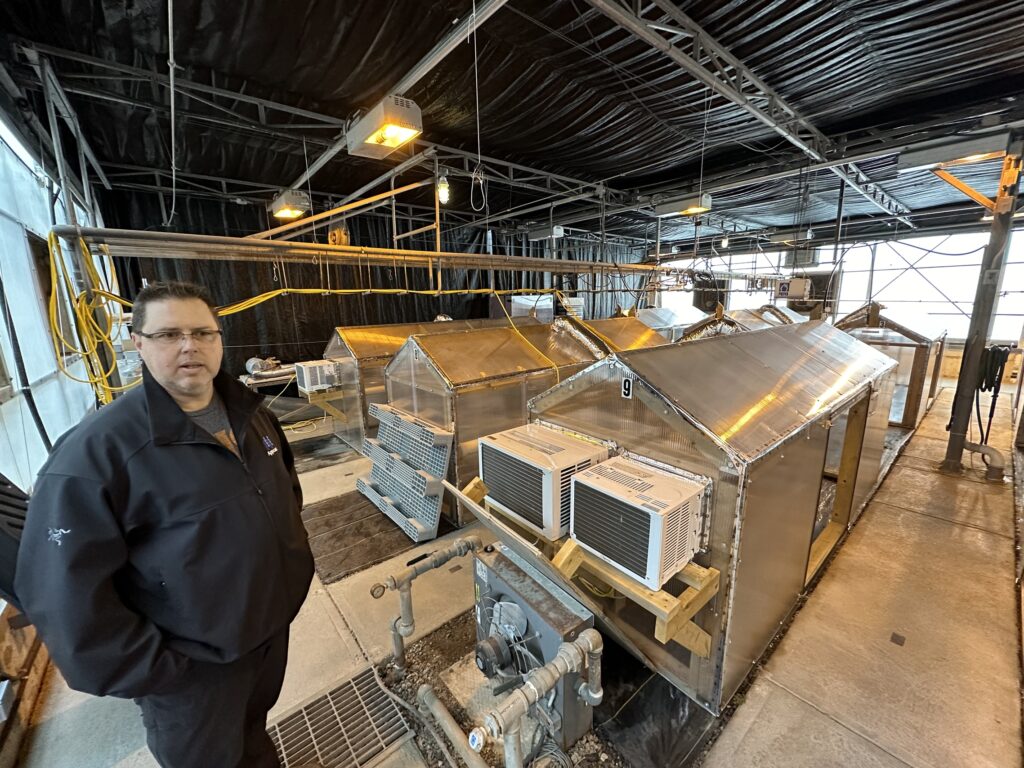
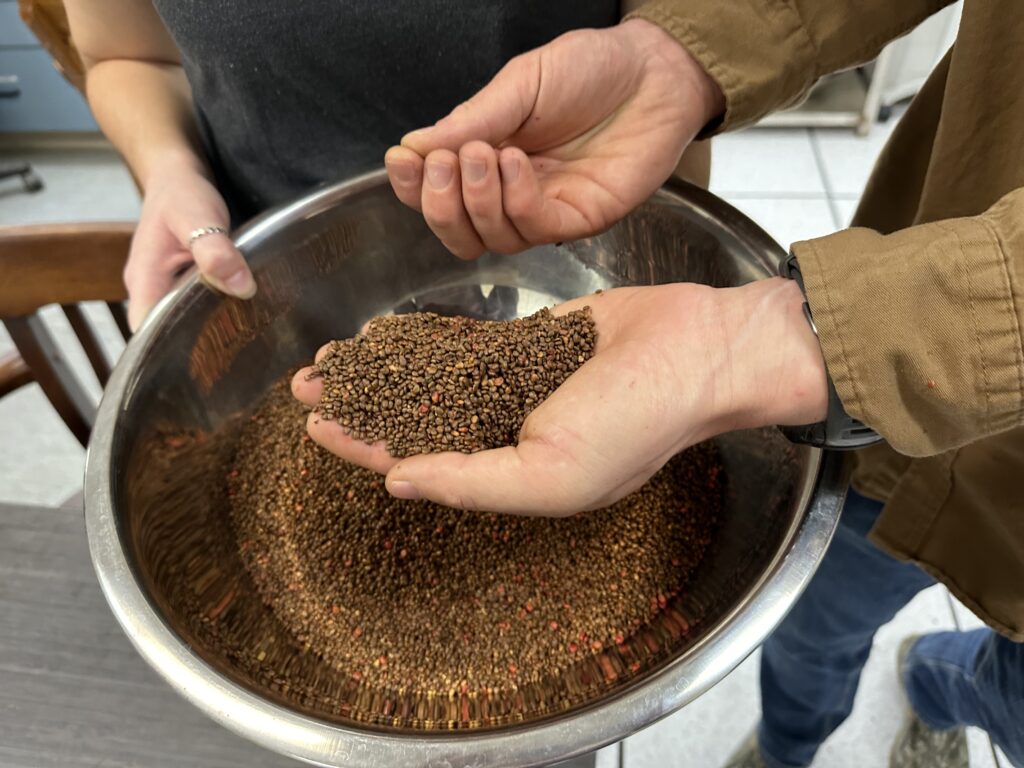
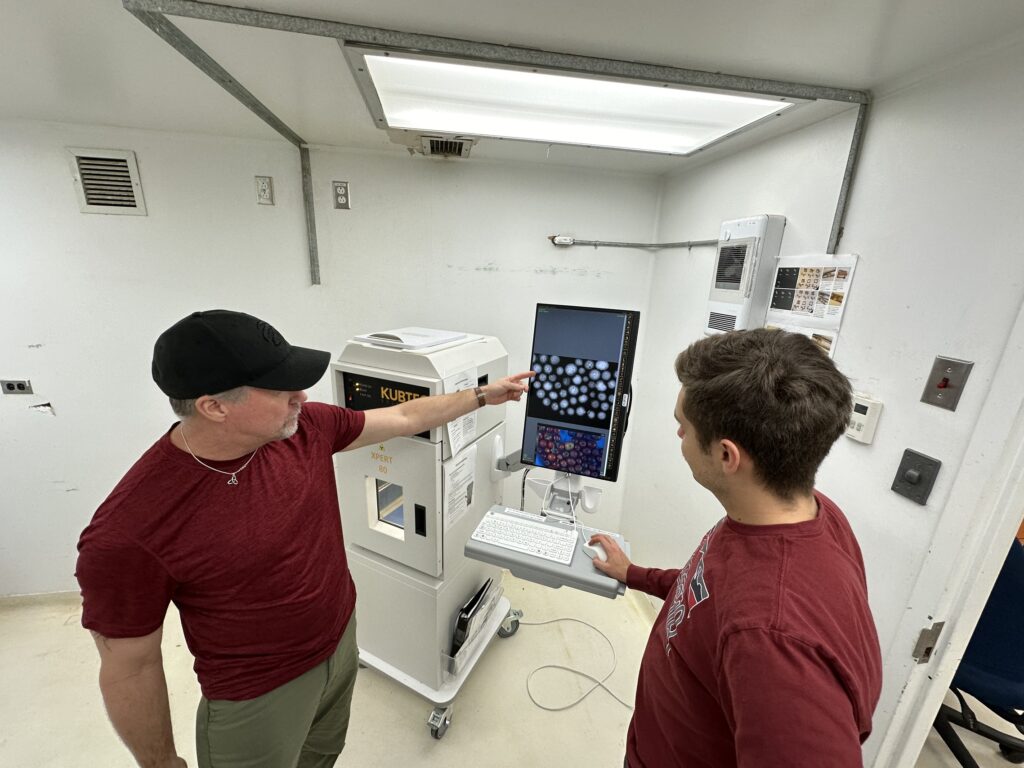
So in addition to its own work, the NTSC is encouraging communities and parks to create local collections. “The hope is, they can create their own seed banks and growing operations,” McPhee says. Inspired by the Cape Breton tree planting project, the NTSC brought together biologists and others from nine national parks in eastern Canada for three days of training in December 2023.
Much of this increased demand is due to McPhee’s efforts. The work, for him, seems less like a job and more like a calling. Even after retirement, he plans to hop back in that RV and head out across the country to continue gathering seeds and training others, adding to Canada’s tree heritage, one seed at a time.
Writer’s update: A couple of new studies conducted by French, German, and Chinese scientists suggests that the NTSC is on the right track when it comes to preserving forest biodiversity. These studies demonstrate the crucial role of biodiversity in safeguarding forests against climate change, particularly when it comes to withstanding drought conditions. Researchers observed how plant and tree diversity, paired with strength in forest litter decomposition, could fully compensate in a variety of forest types for the effects of a drier climate.


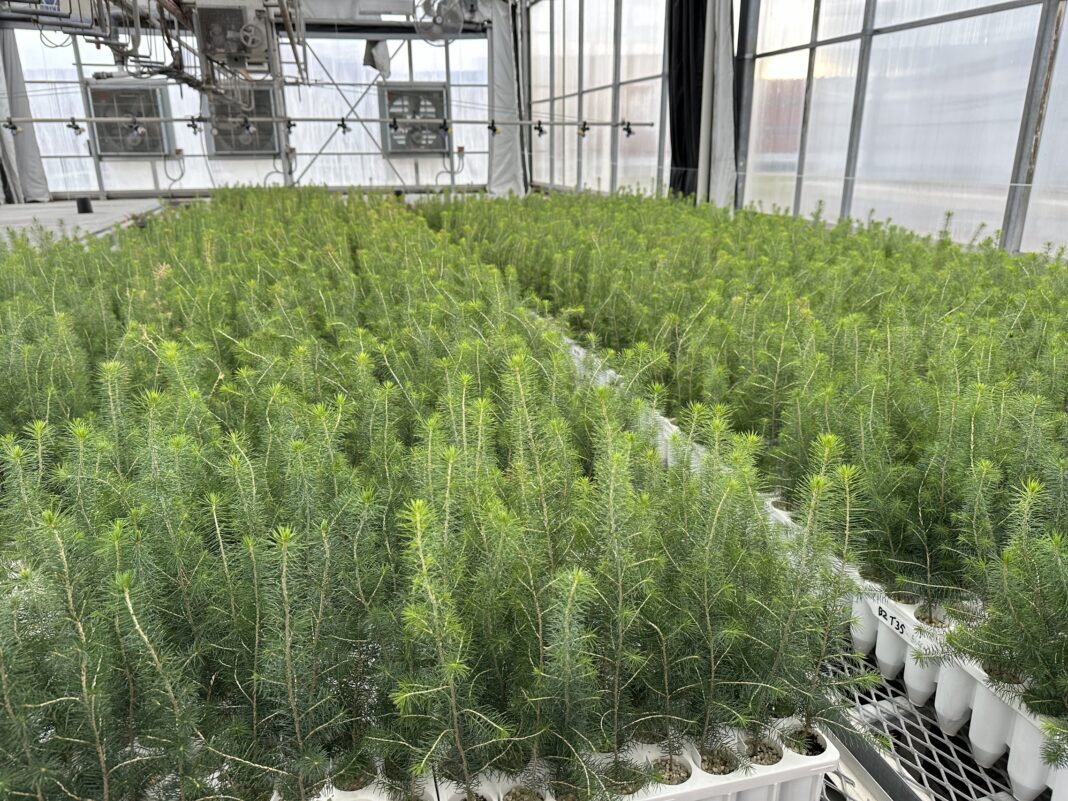
thanks Darcy for the nice artical, much appreciated … one fact check, I’m only turning 58 this year haha